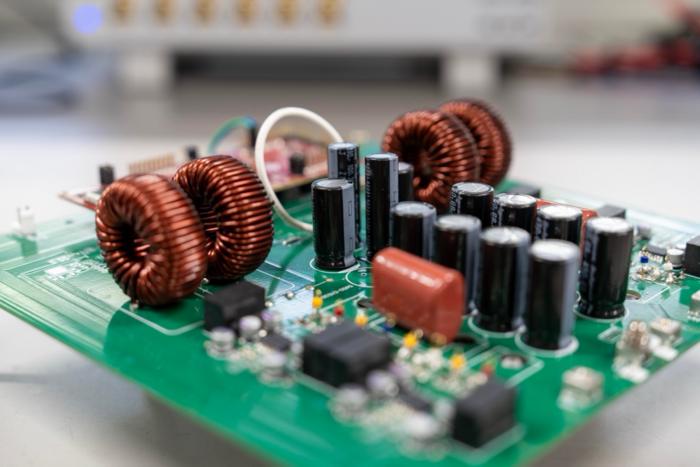Cellular Scaffold Paves the Way for Groundbreaking Myoblast Implantation in Healthy Muscle
Researchers from Tokyo Metropolitan University have made a significant leap in the field of regenerative medicine, focusing on the treatment of age-related muscular atrophy. This common yet debilitating condition, characterized by the gradual loss of muscle mass and strength, often severely impacts the quality of life for many individuals, particularly the elderly. The innovative approach […]


Researchers from Tokyo Metropolitan University have made a significant leap in the field of regenerative medicine, focusing on the treatment of age-related muscular atrophy. This common yet debilitating condition, characterized by the gradual loss of muscle mass and strength, often severely impacts the quality of life for many individuals, particularly the elderly. The innovative approach undertaken by these scientists promises not only to hamper the progression of muscle degeneration but also to enhance the overall muscle repair process, aligning with the urgent need to find effective interventions in an aging society.
Traditionally, the methods implemented for the implantation of myoblasts—precursors to muscle fibers—have relied on creating a controlled environment for the cells to successfully graft onto existing tissue. Historically, this has necessitated some level of prior damage or scarring, allowing the new cells to assume the “repair mode” activated by satellite cells in the muscle tissue. However, the Tokyo Metropolitan University team broke new ground by infusing extracellular matrix (ECM) fluid into the implantation process, which is believed to provide a more conducive environment for promoting myoblast integration in healthy muscle.
By injecting myoblasts in conjunction with ECM fluid, researchers found that they could enhance the survival and integration rate of the cells within unscarred muscle tissue. This novel method employs the natural scaffolding properties of ECM, which first supports cell positioning within the body, but intriguingly, it may also contain essential biochemical signals necessary for successful cell integration. Their findings suggest that the ECM helps to address the challenges traditionally faced when introducing new cells to intact muscle, thus revolutionizing the application of regenerative therapies.
Experimental studies conducted on mice demonstrated that the presence of higher concentrations of ECM, when coupled with myoblast injections, significantly increased the success rates of cell engraftment. Interestingly, as ECM concentration rose, so too did the instances of effective myoblast incorporation. However, this research is not without its hurdles; excessive levels of ECM could potentially lead to undesirable fibrosis, as collagen fibrils penetrate the healthy muscle tissue. Nonetheless, researchers adeptly navigated through these complications and were able to optimize their formulations to achieve better results.
The juxtaposition of ECM with cultured myoblasts highlights an exciting area of research that not only improves therapeutic efficacy but also fuels interest in further understanding the molecular mechanisms underlying muscle repair. Despite the team’s current inability to pinpoint which specific component of the ECM encourages successful muscle cell incorporation, the exploration continues. This essential inquiry will pave the way for innovations that could lead to more targeted regenerative therapies, ultimately transforming how we manage muscle degenerative diseases as the population ages.
Overall, this research offers a beacon of hope for those afflicted with age-related muscular atrophy, a condition that has far-reaching implications not just for health but for an individual’s autonomy and life quality. As effective treatments become ever more necessary, this adaptive technique could offer substantial improvements over conventional methods. The prospect of enhancing myoblast engraftment could revolutionize regenerative medicine, ultimately enriching the lives of countless individuals suffering from degenerative muscle conditions.
Moreover, the implications of this research go beyond treatment. With an aging global population, the prevalence of muscle atrophy signifies a growing public health concern. By addressing this pressing issue, the Tokyo Metropolitan University team emphasizes the importance of innovation and research collaboration in alleviating common health challenges associated with aging. As methodologies continue to evolve, the potential for larger-scale implementations of these findings becomes increasingly achievable.
The intersection of regenerative medicine and cell replacement therapy is profoundly pertinent in today’s health discourse, especially concerning muscle-related ailments. By merging these fields and optimizing cellular implantation techniques, researchers aspire not just to restore functionality but to significantly improve overall health outcomes. It becomes evident that this pioneering research could serve as a vital foundation for future studies aimed at comprehensive muscle tissue regeneration strategies.
The enthusiasm surrounding this research also sheds light on the broader implications for regenerative medicine as a discipline, inspiring the scientific community to think outside the box in developing actionable and effective therapies. The success of such innovative techniques highlights the necessity of interdisciplinary collaboration and forward-thinking methodologies. As this area of research develops, it encourages the scientific community to delve deeper into unexplored pathways and contribute to the ongoing fight against age-related muscle degeneration.
As researchers continue to dissect the interactions between the extracellular matrix and myoblasts, new horizons in regenerative medicine will undoubtedly emerge, taking us one step closer to realizing comprehensive treatment protocols for patients suffering from muscular atrophy. Such advancements could soon redefine standards of care and provide long-lasting solutions to muscle degeneration.
The team’s findings indicate a profound understanding of the microenvironment required for effective myoblast engraftment and a willingness to explore unconventional strategies. As regenerative therapy becomes increasingly relevant in addressing widespread health challenges linked to aging, this ongoing work at Tokyo Metropolitan University exemplifies the potential for transformative impacts on real-world health issues.
Subject of Research: Age-related muscular atrophy and regenerative medicine
Article Title: Achieving myoblast engraftment into intact skeletal muscle via extracellular matrix
News Publication Date: 14-Jan-2025
Web References: DOI link
References: Frontiers in Cell and Developmental Biology
Image Credits: Tokyo Metropolitan University
Keywords: Myoblasts, Muscle atrophy, Stem cell research, Skeletal muscle, Regenerative medicine, Muscle cells, Extracellular matrix, Extracellular fluid, Tissue repair, Disease control
Tags: age-related muscular atrophy solutionscellular scaffold technologyextracellular matrix in muscle repairhealthy muscle tissue integrationinnovative muscle repair strategiesinterventions for elderly muscle healthmuscle degeneration prevention methodsmuscle fiber precursor applicationsmyoblast implantation techniquesregenerative medicine advancementsresearch on muscle mass restorationTokyo Metropolitan University research innovations
What's Your Reaction?

































